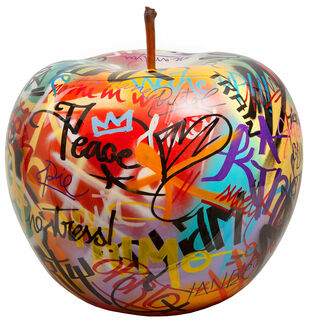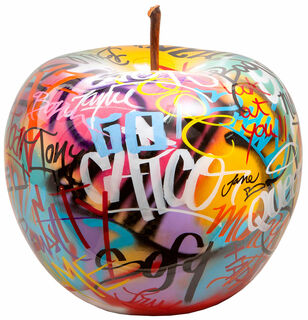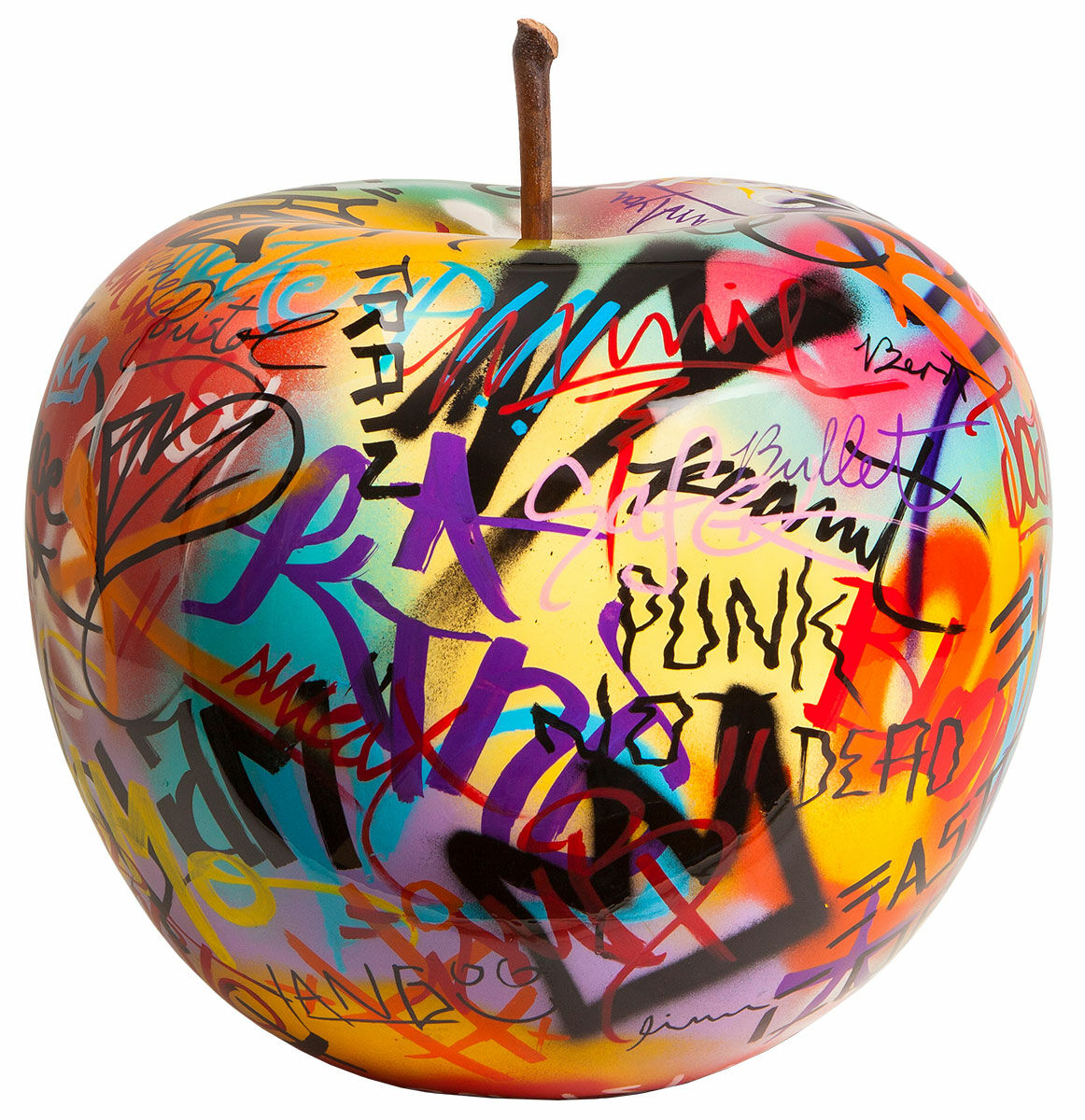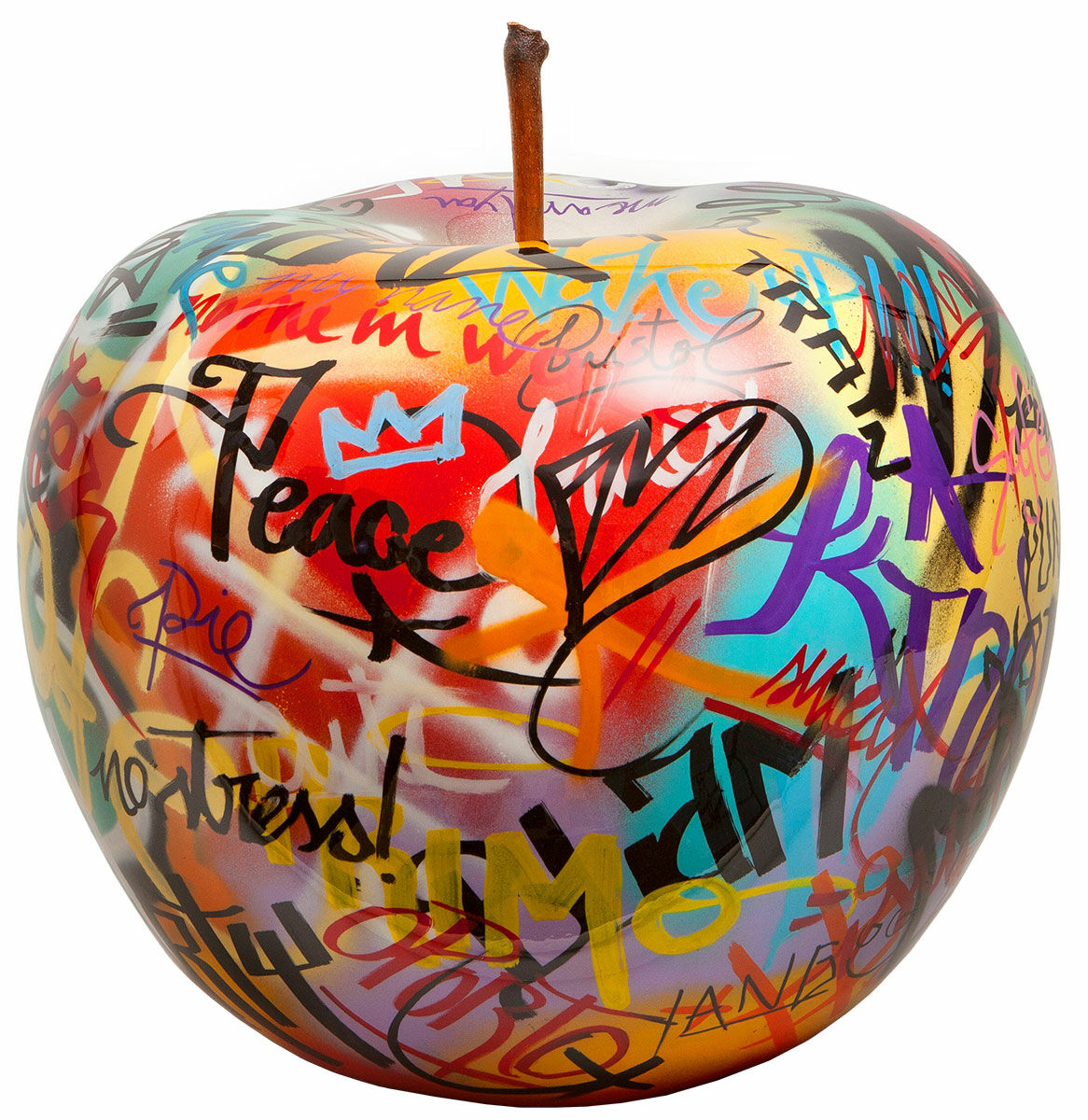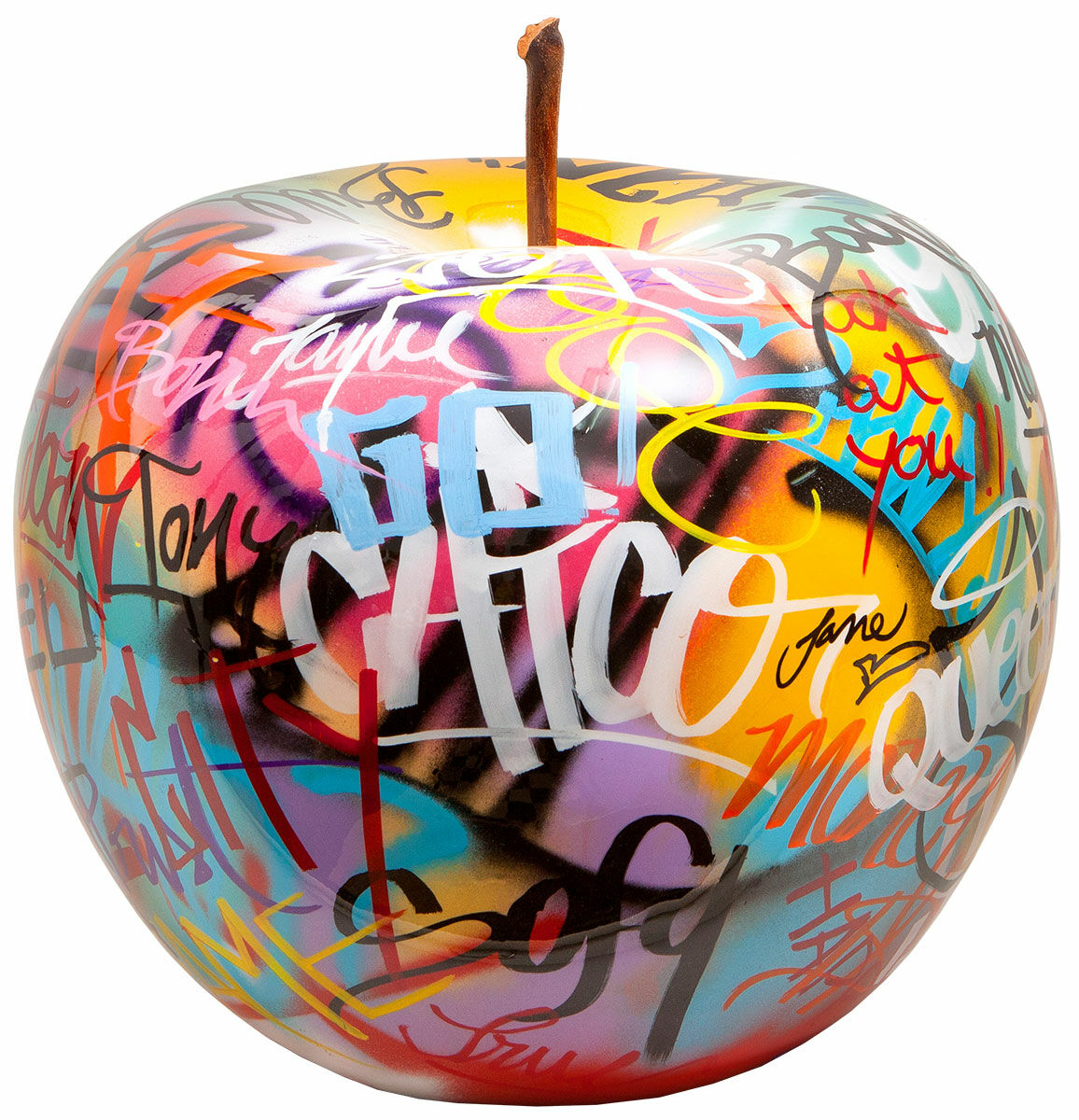Ceramic object "Apple Graffiti" New
Ceramic object "Apple Graffiti" New
Quick info
handmade | ceramic + wood | lacquered | height 10 cm | Ø 12 cm
Detailed description
Ceramic object "Apple Graffiti"
The apple as a special eye-catcher in a modern living environment in a contemporary interpretation refined with graffiti in vibrant colours. Each piece was individually designed by Portuguese graffiti artist Bruno - a serial unique piece.
Made of ceramic, lacquered, with wooden handle. Height 10 cm. Diameter 12 cm.

About Bruno
Bruno Jorge Monteiro e Silva, known by his artist name Bruno, began his career as a graffiti artist in 2005. He was fascinated by the dynamism of graffiti on public transportation, which he perceived as moving galleries. He experimented with different lettering styles and was influenced by tattoos and Arabic script, among other things.
Through his graffiti, which is influenced by music, contemporary culture, and the street, where graffiti originated, he aims to convey a positive attitude towards life. The warm, vibrant colours he works with emphasise the exciting and explosive vitality of his works.
Ceramic product made of kaolin, quartz and feldspar.
Porcelain is formed by turning or pressing and figurative objects are cast. Complex objects have to be cast in separated steps and sections and then "assembled". After the moulding, the pieces are dried and "annealed" at about 900 °C. Next, the glaze will be applied and fired at temperatures between 1,240 °C and 1,445 °C. In renowned manufactures, the porcelain is painted by hand whereby each colour has to be fired individually and in compliance with narrow temperature tolerances.
Porcelain was invented in China and became widespread in Europe from the 16th century onwards. The first European porcelain factory was founded in Meissen, Germany in 1710.
Other famous European porcelain factories include Fürstenberg, Höchst, Schwarzburger Werkstätten, Lladró, Nymphenburg, KPM, Augarten, Sèvres, Limoges, Royal Copenhagen, Worcester. Individual factories label their products with their personal porcelain stamps so that for the collecter it is easy to identify their origin.


